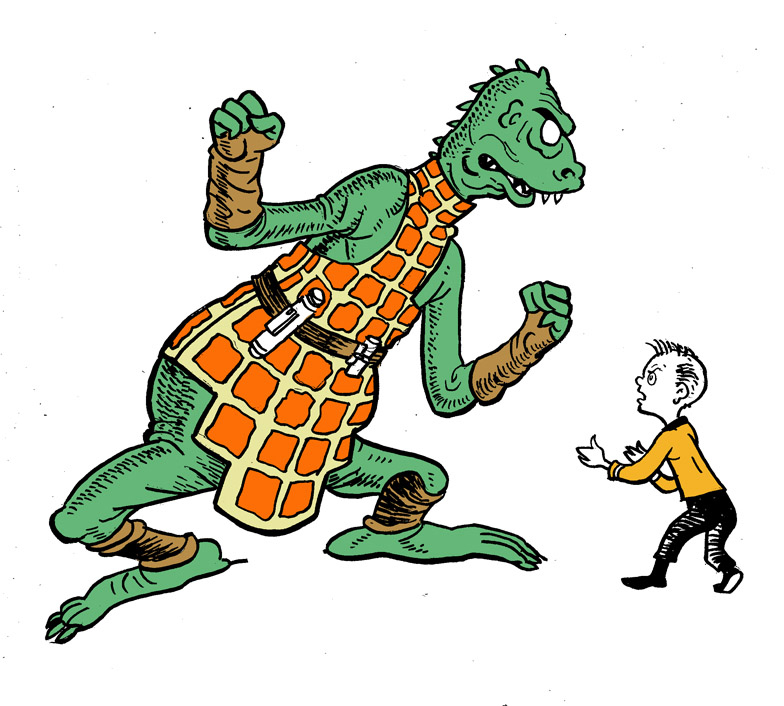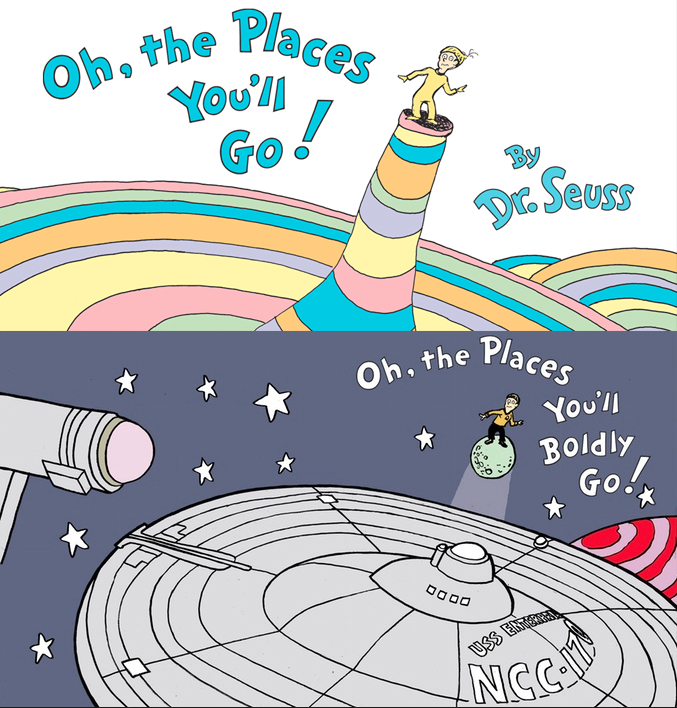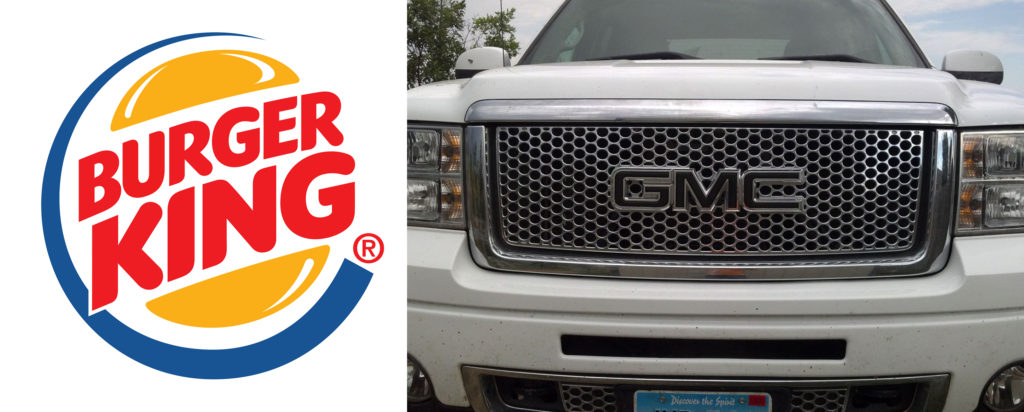
Many Fans down in Fanville like mash-ups a lot.
But Dr. Seuss Enterprises, or DSE for short, did not.
DSE owns the rights, it isn’t in question,
to the late Dr. Seuss’ entire literary collection.
So when David Gerrold, the man who created the tribbles,
tried to mix Seuss and Star Trek, DSE had their quibbles.
In fact, they filed a federal suit,
for infringement of copyright…and trademark, to boot!
The defendants were Gerrold and his artist, Ty Templeton.
They also named the publisher, to add to their fun.
The publisher’s name, by the way, was ComicMix,
and if you ask me, DSE is a real bunch of…
Okay, I’m going to stop blogging in rhyme now. Instead, let me tell you about some major developments in the Dr. Seuss/Star Trek mash-up lawsuit. On December 11, both the plaintiff and defendants filed 20-page briefs (memoranda) supporting their latest motions before the judge. A hearing is scheduled for January 31 at 1:30pm in the San Diego courtroom of Hon. Janis L. Sammaritno, federal judge on the Ninth Circuit (the same circuit that had jurisdiction in the Axanar lawsuit, although a different judge than Axanar had).
Judge Sammartino’s rulings on these pre-trial motions could affect this case in VERY significant ways. If she grants the defense motion for summary dismissal, the case could be over or potentially cut off at the knees for the plaintiffs. On the other hand, if she grants the plaintiff’s motion, “Team Mash-up” (as I like to call them) could lose before ever going before a jury. The stakes are as high as they’ve ever been.
As usual, I’m happy to break this down from legalese to English for those who want to know the score…

The lawsuit almost ended back in June of 2017 with a win for Team Mash-up when the judge in the case threw out the Trademark Infringement complaint entirely and left the Copyright Infringement complaint hanging by a thread. It looked as though this might be a slam-dunk. Even though the judge ruled that Oh, the Places You’ll Boldly Go! was NOT a parody (which is protected by Fair Use and would have ended the lawsuit right there), she did rule that it was transformative (that it changed the original work significantly), and that’s one of the biggest of the four elements of proving Fair Use.
Another element of Fair Use was judged very slightly in favor of the plaintiff (that the original work was worthy of protection), and one was judged neutral. The judge called this a “near-perfect balancing of the factors” of fair use.
So the “tie-breaker” was the final aspect of Fair Use: is the existence of the allegedly infringing work potentially damaging financially to the rights holders? Although DSE claimed that there was damage, they didn’t prove it. And Team Mash-up argued that, since their book never came out, how could there be any actual financial injury. (Read more about it in this blog.) DSE had thirty days to explain why they were harmed by a n0n-existent book or else see their entire lawsuit dismissed. It was do or die time for the plaintiffs!
They opted for “do”, and DSE argued in a new filing that the financial harm to them came not from lost revenue from book sales (since no book was completing with theirs yet) but from lost LICENSING opportunities!
By making an end-around run and avoiding the acquisition of a legal license from DSE, the plaintiff’s attorney argued, the defendants were depriving DSE not only revenue from the ComicMix mash-up book license but also from other potential licensees who might think, “Oh, I don’t need a license either…!” and skip the annoying and expensive process entirely. This possible new trend of license “evaders” would probably require additional costly legal actions, resulting in even more financial harm to DSE
And while they were at it, DSE’s attorneys also filed a motion to reinstate their trademark infringement complaint, arguing that Team Mash-up had copied their title (adding only one minor word), their font lettering style, and the style of Dr. Seuss’ drawings.
After another six months of trading motions and responses, the two sides met in front of the judge in November 2017. The result, announced in early December, was jaw-dropping to say the least…and devastating to the defense!
Judge Sammartino was persuaded enough by the new arguments to allow the case to continue. Fair use was still in play—the judge didn’t see enough to toss out the Fair Use defense entirely (as Judge Klausner had done a year earlier in the Axanar lawsuit, opening the door for an appeal). But the case went the copyright complaint hanging by a thread to it now being back on reasonably solid footing.
To make matters worse for Team Mash-up, DSE was also able to convince the judge to reinstate their trademark complaint for illegal use of the book title, font, and art style of Dr. Seuss. (Read more about all of the above in this blog.)
In May of 2018, Team Mash-up got a little gift from the judge when she tossed out the first of the three trademark complaints, ruling that the title Oh, the Places You’ll Boldly Go! by itself doesn’t purposefully mislead that it is a product of DSE, and the Mash-up book clearly states that it’s not. (Read more about that in this blog.) But that left two trademark complaints—infringement of the font and art styles—still in play.
And so, here we are at the beginning of 2019. The trial is scheduled to start in the spring, and both legal teams are making one last swing for the bleachers. Last month, both sides filed motions with the judge:
The defense wants the lawsuit dismissed once and for all before it goes to trial (and I’ll explain their argument in a moment).
The plaintiffs want the judge to grant a summary judgement in their favor, ruling that there is NO Fair Use and that Team Mash-up is liable for willful copyright AND trademark infringement to the tune of $150,000 per violation.
A hearing is scheduled in Judge Sammartino’s San Diego courtroom on January 31 at 1:30 p.m. Depending on how convincing each side is, this case could potentially end BEFORE it ever goes to trial.
So how convincing are Team Mash-up and DSE?
TEAM MASH-UP’S ARGUMENT
I’ll try to keep the following summary fairly short. You’re invited to read the entire defense filing if you’d like.
1) The last nail in the copyright coffin?
According to the defense, DSE has failed to prove that they will suffer financial harm from Team Mash-up’s book. Sure DSE says that they’ll lose licensing opportunities, but when asked to show what licensing deals they’ve had since 1994 (when they began) for “hybrid” books trying to mash-up Dr. Seuss and another property, they didn’t have any. This might sound like a needless technicality—hey, a license is a license!—but legally, there is an important element in play here. The judge ruled that Boldly! is TRANSFORMATIVE. This makes the mash-up into its own unique “sub-species” (my term), and the law needs to view it as such.
The defense motion quoted precedent in the ruling of another intellectual property case from 2014:
If a publisher makes licenses available for some uses but not for others, this indicates that the publisher has likely made a reasoned decision not to enter the licensing market for those uses, which implies that the value of that market is minimal.
In other words, use it or lose it. DSE hasn’t made a licensing deal for a hybrid project in 25 years of doing business. So it’s unlikely that one hybrid Seuss/Star Trek mash-up is going to impact impact their business model by deterring other potential hybrid licensees because they don’t seem to be any!
Likewise, the defense argues (again) that Boldly! goes after an entirely different target demographic. While Dr. Seuss books are purchased by children and adults, they aren’t necessarily purchased by Trekkies. And it’s unlikely that your typical sci-fi geek is gonna buy Boldly! INSTEAD of the original Oh, the Places You’ll Go! If anything, they’re probably buying Boldly! because they already own and love Dr. Seuss and might even go out and buy some of DSE’s books to compare the Boldly! illustrations to the “originals.”
Therefore, there’s no real financial harm proven, which takes us back to June of 2017 when the judge said there was a “near-perfect balancing of the factors” of Fair Use. And if the fourth factor (financial harm) shifts from plaintiff to the defendant’s favor, then Fair Use wins out and the copyright claim should be dismissed.
2) The trademark one-two punch!
Here, the defendants are throwing everything but the kitchen sink into proving that you can’t trademark an artistic style. You can trademark a specific artistic expression, but how do you define a style? Even Judge Sammartino said during the November 2017 hearing that DSE’s “claimed general ‘illustration style’ is not protectable.” So one wonders why it’s still included in the lawsuit at all. Team Mash-up wants the judge to make it official and toss out the trademark claim of artistic style infringement, leaving only…
Fonts! In the United States, you can’t copyright a font or typeface. You can copyright the computer code that is used to create digital fonts, but the letters and numbers and symbols themselves are not copyrightable. However, DSE isn’t listing the font letters as part of its copyright claim but rather the trademark complaint.
Here’s the thing about trademarks, though. You can only trademark a specific logo containing letters and a name. For example, BURGER KING inside the hamburger with the blue circle is a trademarked logo. You can’t use it without permission (unless you’re a journalistic blog site illustrating a concept). GMC on the front of a truck is totally trademarked. But those companies don’t own the entire typefaces for their logos, only the specific combination of letters that appear IN the logos themselves.

Such is the case for DSE. They might own the specific Oh, the Places You’ll Go! title as written on the cover. But do they own the entire hand-lettered typeface? Perhaps not. And since the title with the word “Boldly” in it has been ruled NOT a trademark infringement, then does it matter that Team Mash-up is using a font style for what could be argued is a totally different and unique title?
If the judge agrees with all of these arguments, she could very well dismiss the entire lawsuit…and instead of going to trial, and Team Mash-up would be going to press!
Sound like a slam-dunk for the defense? Think DSE’s case is toast? Come back tomorrow and watch me potentially change your mind completely! When you discover what the plaintiffs have decided to tell the judge, you might just conclude that it’s game over for Team Mash-up instead!

With the government shut down happening and the courts running out of money on January 11, how is this going effect the scheduled court date? My understanding is all civil cases are being put on hold, asking for settlements, or quick decisions in the shut down last longer than this week. Thanks.
Excellent question! I know that the deadlines for filing motions, memoranda, and responses/replies were set more than a month ago…well before the shut down. How that affects those deadlines is something I need to look into!
I thought that certain fonts were indeed trademarked, such as Coca-Cola and Walt Disney’s?
Logos, yes. Fonts, no. The Coca Cola Company owns “Coca Cola” and “Coke” when written in those typefaces. They also own any other brand or product logo that is theirs that they’ve used their typeface/font to create. (Pop quiz: who knows the difference between a font and a typeface? No looking at Google!)
Technically, I could make my FAN FILM FACTOR logo in the Coca Cola or Disney typeface and not get sued (at least, not successfully). Granted, why would I even bother? But notice that I do use the classic TOS typeface in my logo, and CBS can’t come after me for that. Of course, why would they even bother? I make pennies a day from this blog.
Ugh. “$150,000 per violation”. A phrase I never want to see again.
Such a round number…except the 1 and the 5, of course. 🙂